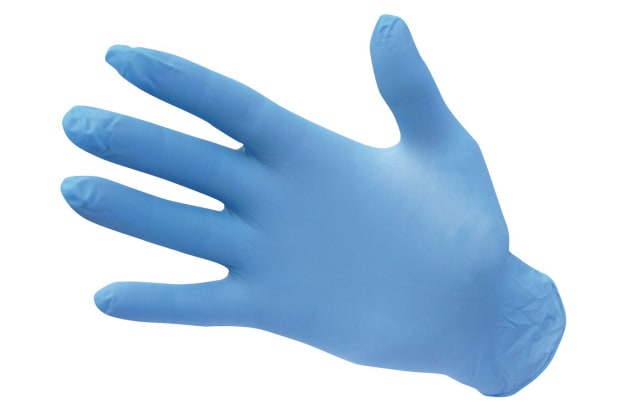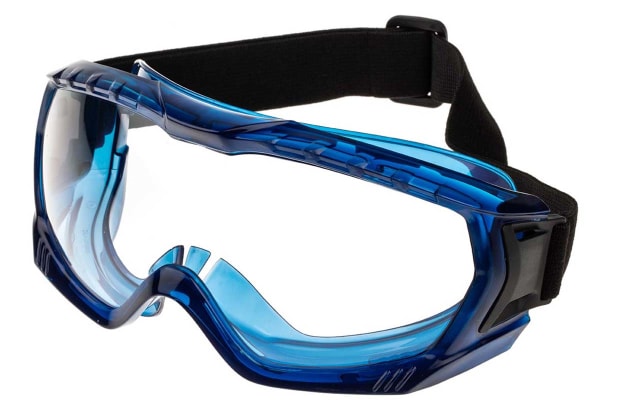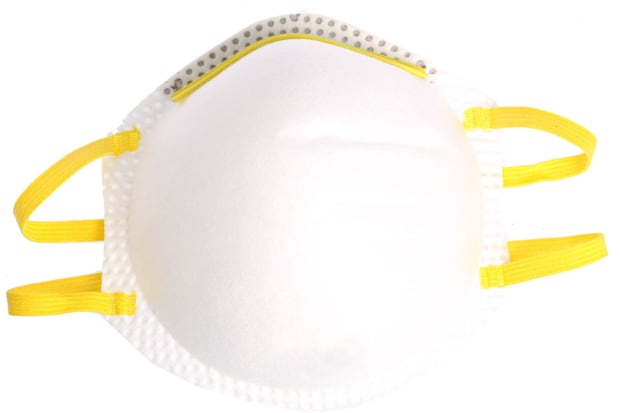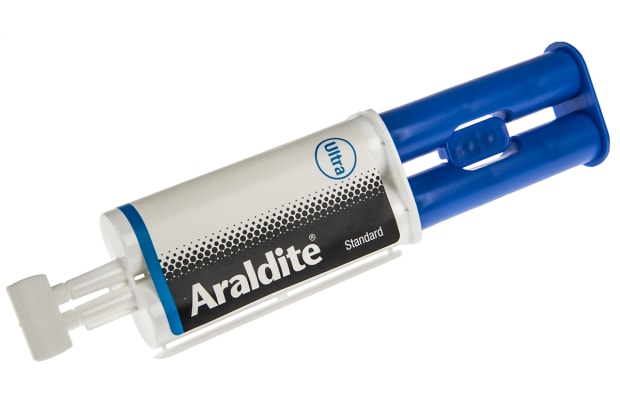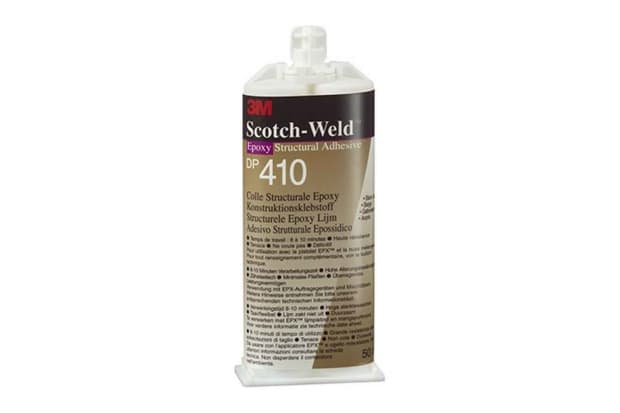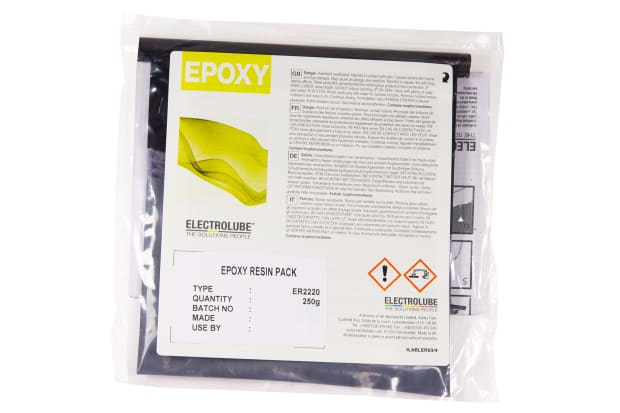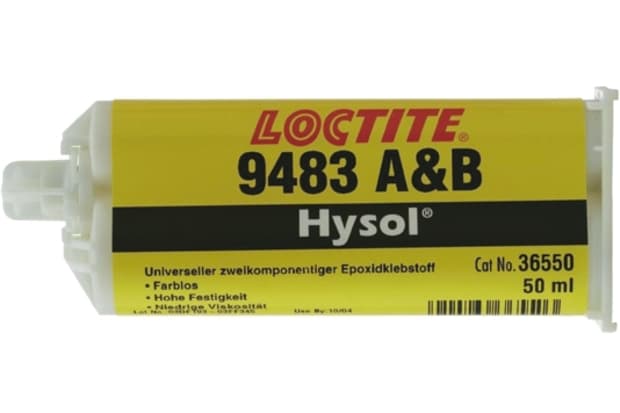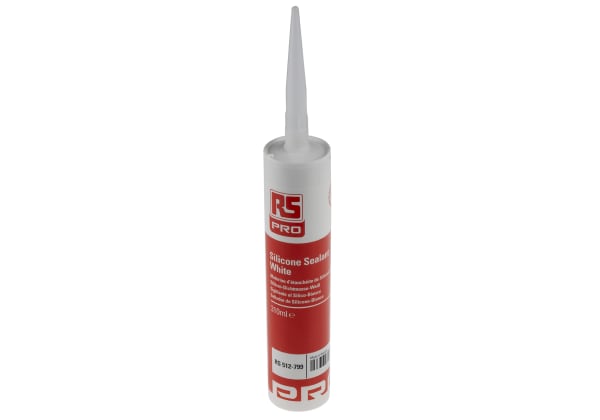- Published 1 Feb 2023
- Last Modified 29 Aug 2023
- 13 min
A Complete Guide to Epoxy Resin
Join us for an in-depth look at epoxy resins, how they are used, the common types and popular application methods.

Reviewed by Stephen Bettles, Technical Support Engineer (January 2021)
Epoxy resin is a versatile and highly adhesive material widely used in the construction, woodworking, and manufacturing industries. Its exceptional bonding properties, resistance to chemicals and moisture, and ability to withstand moderate temperatures make it a go-to choice for various applications.
From providing a waterproof barrier to heat resistance and high strength, epoxy resin offers a range of benefits. However, proper handling and safety precautions are crucial due to the potential hazards associated with certain formulations.
In this guide, we explore the uses, advantages, and limitations of epoxy resin, providing insights to help you harness its full potential in your projects.
What is Epoxy Resin?
Epoxy resin is an adhesive used in a range of industries and applications.
It can be used domestically and commercially and is available in different grades with differing brittleness. It comprises two parts and is usually mixed in a 2:1 or 4:1 resin-to-hardener ratio.
The positive qualities of epoxy resins include toughness, chemical resistance, and strong adhesion. Many industries, including manufacturing and construction, use epoxy resin. Additional uses include building electronic components such as fibre optics and electrical circuit boards.
Epoxy Resin Definition
Epoxy resin is a two-part synthetic polymer material that, when mixed together, undergoes a chemical reaction resulting in a durable, high-strength, and adhesive substance.
How to Use Epoxy Resin Safely
There are several safety precautions to consider when using epoxy resin.
Firstly, you should wear gloves to protect your hands against exposure to resin and hardening liquids. Nitrile gloves are recommended as they are unlikely to react upon contact with the skin or resin. Baby wipes may be used to remove resin that comes into contact with the skin. Any remaining resin can be removed with soap and water. Exfoliant is an effective removal option.
A plastic apron should be worn, allowing resin spills to be easily removed. You should also wear safety goggles to protect your eyes. If there is any contact with the eyes, you should flush repeatedly with water for 15 minutes and avoid rubbing. Medical attention should be sought at the earliest opportunity.
Lastly, it’s imperative to ensure sufficient ventilation whenever working with epoxy resin. This may be achieved by opening the windows, switching on the ceiling fan in your work area, or using local exhaust ventilation or a fume cupboard. Alternatively, a respirator may be worn if you cannot achieve an adequate ventilation level.
Browse some of the PPE you may need for epoxy resin below:
What is Epoxy Resin Made of?
What are the Different Types of Epoxy Resin?
Epoxy resin falls under two principal categories - glycidyl and non-glycidyl. Glycidyl resins come under the subcategories of glycidyl-amine, glycidyl-ester, and glycidyl-ether. Non-glycidyl varieties are either aliphatic or cyclo-aliphatic. Glycidyl-ether epoxies are the most commonly used.
Bisphenol Epoxy Resins
Bisphenol-A diglycidyl ether (DGEBA) is commonly used. It is made by the reaction of bisphenol-A in contact with epichlorohydrin in the presence of a basic catalyst. In terms of molecular weight, this epoxy resin has the lowest.
Aliphatic Epoxy Resins
These types of epoxy resins are produced either through double bond epoxidation (involving epoxidized vegetable oils and cycloaliphatic epoxides) or a reaction with epichlorohydrin (glycidyl ethers and esters). Cycloaliphatic epoxides feature at least one aliphatic ring within the molecule containing the oxirane ring. They have high oxirane content, a defined aliphatic structure, and the absence of chlorine. This makes for high Tg, low dielectric constants, weather resistance, and low viscosity.
Novolac Epoxy Resins
These types of resins are made through contact and reaction between phenol and methanol (formaldehyde). The reaction of epichlorohydrin and novolacs results in the creation of novolacs with glycidl residues including epoxycresol novolac (ECN) or epoxyphenol novolac (EPN). Such epoxies do not contain solvents or volatile organic compounds. Being free of VOCs, they are extremely safe to use and respirators aren’t required. They have relatively high adhesive strength, resulting in effective coverage levels. Protection and durability are also assured in these epoxy resin applications.
Halogenated Epoxy Resins
These epoxy resins are admixed for special properties. This involves the application and mixture of fluorinated and brominated varieties. Brominated bisphenol A is the preferred option for flame resistance and electrical applications. However, commercial production and use of these resins are limited due to the low Tg and associated cost.
Epoxy Resin Diluents
Glycidylation of polyols or aliphatic alcohols is necessary to create epoxy diluents. The materials produced as a result of such processes may be difunctional (butanediol diglycidyl ether), monofunctional (e.g. dodecanol glycidyl ether), or higher functionality (e.g. trimethylolpropane triglycidyl ether).
Glycidylamine Epoxy Resins
These epoxy resins have relatively high functionality levels and are formed by the contact reaction between epichlorohydrin and aromatic amines. Industrial grades include triglycidyl-p-aminophenol (functionality 3) and N,N,N′,N′-tetraglycidyl-bis-(4-aminophenyl)-methane (functionality 4). In comparison to EPN and ECN varieties, they are easier to process due to their low-medium viscosity at room temperature.
Consider the epoxy resin properties and uses highlighted below:
Araldite Rapid Epoxy Adhesive
Material Compatibility :
- Ceramics, wood, chipboard, glass, metal, most hard plastics
Epoxy Colour :
- Clear
Scotch-Weld Epoxy Adhesive
Material Compatibility :
- Plastics, composites, metal
Epoxy Colour :
- Various
Araldite Fusion Epoxy Adhesive
Material Compatibility :
- Ceramics, wood, glass, metal, hard plastics, stone, marble, leather, porcelain, brick, concrete
Epoxy Colour :
- Transparent
Loctite Hysol Epoxy Adhesive
Material Compatibility :
- Ceramics, metal, plastics
Epoxy Colour :
- Various
Curing Time and Process for Epoxy Resin
Uncured epoxy resins typically have poor heat resistance, chemical, and mechanical properties. Fortunately, you can transform these epoxy resin properties through curing, involving the reaction of resin with appropriate curatives for the formation of cross-linked thermoset structures. There is some variation in curing times for different epoxy pastes and putties. It’s generally recommended to cure epoxy warm, slow, and long if the project is of importance. You should allow up to 72 hours for epoxy setup and strong adhesive bonds. Full epoxy resin cure time should always be allowed for jobs that require high pressure or stress.
Epoxy resin curing may either involve a reaction with itself (homopolymerisation) or the formation of a copopolymer featuring polyfunctional hardeners or curatives. Varieties of epoxy resin hardeners include thiols, alcohols, phenols, acid anhydrides, acids, and amines. The respective levels of reactivity are phenol < anhydride < aromatic amine < cycloaliphatic amine < aliphatic amine < thiol. You may increase the speed of the curing reaction through the addition of small quantities of accelerators such as tertiary amines, carboxylic acids and alcohols.
How to Mix Epoxy Resin and Hardener
Proper epoxy resin preparation is crucial to a strong and effective cure. Here's a general step-by-step guide on how to mix epoxy resin and hardener:
- Read the instructions: Carefully read and understand the instructions provided by the manufacturer for the specific epoxy resin and hardener you are using. Different products may have different instructions or specific mixing ratios
- Prepare the workspace: Ensure you are working in a well-ventilated area with proper ventilation or wearing a respirator if necessary. Cover your work surface with a protective material like plastic or wax paper to prevent accidental spills or damage
- Measure the components: Use separate, clean measuring containers for the hardener and resin. Most epoxy resins require a specific mixing ratio, typically by volume or weight. Measure both components according to the recommended ratio specified in the instructions. It's critical to be precise and accurate with measurements for proper curing
- Mix thoroughly: Pour the measured amounts of epoxy resin and hardener into a clean mixing container. Use a stirring stick or mixing paddle designed for epoxy resin. Stir slowly, scraping the sides and bottom of the container to ensure thorough mixing. Gradually increase the speed while mixing, until the two components are fully combined
- Use the mixture promptly: Epoxy resin has a limited pot life which varies depending on the particular product. Once the components are mixed, use the epoxy resin within the recommended pot life period to ensure proper curing and adhesion
Epoxy Putty
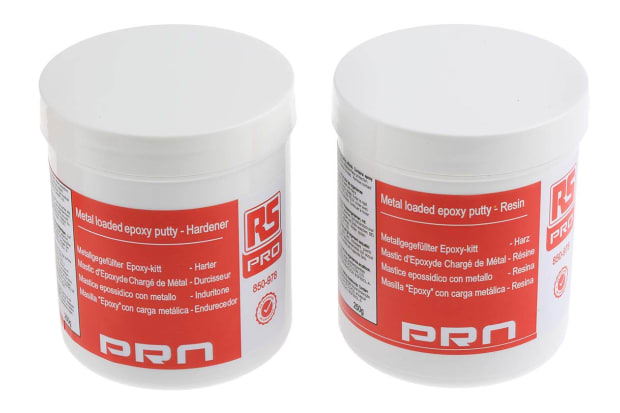
Epoxy putty may refer to any one of a collection of room-temperature hardening substances, used as space-filling adhesives. Such putty compositions may vary, depending on the manufacturer and application. They are strong adhesive fills, which bind, set, and waterproof a variety of materials. Epoxy putty assures waterproof sealing.
What is Epoxy Resin Used for?
There is a wide variety of uses for epoxy resin, including coating, adhesion, and the formation of composite materials including those using carbon fibre and fibreglass reinforcements. It is possible to alter the properties of epoxy resin such as silver-filled epoxies featuring high electrical conductivity.
Epoxy Resin Adhesives
Epoxy adhesives fall under the category of structural adhesives or engineering adhesives, with chemical varieties including polyurethane, acrylic, and cyanoacrylate. Such adhesives may be used to bond aircraft parts, golf clubs, skis, and snowboards. They also allow for the strong adhesion of wood, metal, glass, stone and other materials. However, the adhesion won’t be as strong at temperatures above 350°F (177°C).
Epoxy Resin Uses for Industrial Tools
Epoxy resin can be used for the strong binding and production of tools such as moulds, master models, laminates, castings, and fixtures. Plastic tooling is the ideal replacement for metal and wood. It allows for greater efficiency and reduced expense and lead times for a range of industrial processes.
Epoxy Resin for Electrical Applications
Epoxy resin is commonly used by electrical industry workers in the building of motors, generators, transformers, insulators, and printed wiring boards (PWBs). The resins have high levels of electrical insulation and ensure component protection from short-circuiting due to dust and moisture accumulation.
Epoxy Resin for Consumers
The high levels of adhesion mean that epoxy resin is a popular choice among consumers for the repair and maintenance of domestic objects. It allows for the relatively rapid and effective fixing of fragile items such as glass, ceramics, and china. It is also suitable for repairing wood, metal, and latex domestic items.
Epoxy Resin for Artwork and DIY
Epoxy resin can be combined with pigments for artistic applications. Layers may be added to create a complete picture. Other common uses include jewellery decoration and decoupage of work surfaces.
Epoxy Resin Uses in Construction
Epoxy resin has numerous applications in the construction industry due to its excellent adhesive properties, durability, and resistance to chemicals and moisture. For instance, epoxy resin is commonly used for concrete repairs, such as filling cracks and restoring structural integrity. It is also a popular choice for seamless and durable flooring systems in commercial and industrial buildings. This is because epoxy provides a smooth, glossy surface that resists chemicals, abrasion, and impacts. Epoxy resin uses in construction also include waterproofing applications, grouting, and anchoring and securing applications where a strong bond is required.
Epoxy Coatings and Painting
Epoxy paint, otherwise known as epoxy floor coating, is commonly used for garages, basements, and patio floors. Straight epoxy paint will feature a mixture of acrylic paint and epoxy of the one-part variety. Acrylic epoxy paint can be used to colour, which dries like regular paint. This paint can be purchased in colours like metallic blue and cream for an attractive finish.
The epoxy coating is made of a compound, featuring epoxy resin and polyamine hardener. The mixing of these elements results in a chemical reaction involving cross-linking during curing. Epoxy coatings protect against abrasion, turbulence, corrosive fluids, and extreme temperatures.
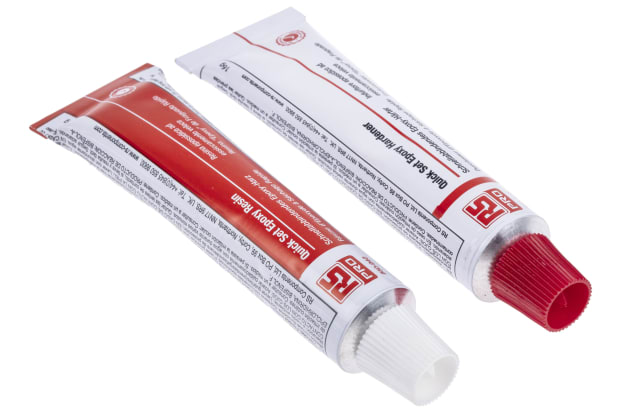
Benefits of Epoxy Coating:
- Durability
- Non-toxicity
- Weather resistance
- Impact resistance
- Chemical resistance
- Cleanliness and ease of maintenance
How Does Epoxy Resin Compare to Other Resin Types?
Casting Resin vs Epoxy Resin
Casting resin is an epoxy resin formulated explicitly for casting and molding applications. It has a low viscosity and long curing time, allowing it to flow easily into molds and capture fine details. Casting resin is often used for creating jewellery, art pieces, and decorative objects.
Acrylic Resin vs Epoxy Resin
Acrylic resin, or polymethyl methacrylate (PMMA), is a thermoplastic material. It is commonly used as liquid monomers that polymerise when exposed to heat or light. Acrylic resin is widely used in applications such as dental prosthetics, orthopaedic devices, and decorative items. It is known for its clarity, impact resistance, and UV stability.
Polyester Resin vs Epoxy Resin
Polyester resin is a thermosetting polymer that cures when mixed with a catalyst or hardener. It is commonly used in fibreglass reinforcement applications, such as boat building, automotive parts, and composite structures. Polyester resin offers good chemical resistance and mechanical strength, but it is brittler than epoxy resin.
FAQs
Epoxy Resin Manufacturers
Araldite
Browse our extensive range of epoxy resins and adhesives from Araldite and shop today.
3M
Explore epoxy resin and adhesive from 3M and find the most suitable product for your requirements.
Electrolube
See our selection of Electrolube epoxy products and discover the best for your project today.
Loctite
RS offers a wide variety of epoxy resin and adhesive products from leading brands. Browse the full range from Loctite today.
In conclusion, epoxy resin is a versatile and durable material that finds applications in various industries. Its adhesive properties, resistance to chemicals and moisture, and ability to withstand moderate temperatures make it a valuable choice for bonding, coating, and sealing purposes. From its waterproof capabilities to heat resistance and high strength, epoxy resin offers a range of advantages. However, it is imperative to follow proper handling procedures and safety precautions to ensure safe use. By understanding the properties and considerations surrounding epoxy resin, you can make informed decisions and unlock its full potential for your projects.
